Manipulating Arm
Categories: Automation TechnologiesManipulating arm is designed to grab and release pieces in two different positions. It includes a double effect cylinder to move the piece up and down, a rotary cylinder to transport the piece b...
Product
Description
Manipulating arm is designed to grab and release pieces in two different positions. It includes a double effect cylinder to move the piece up and down, a rotary cylinder to transport the piece between the two positions and a pneumatic gripper. Different types of sensors (magnetic / inductive) enable the identification of the arm’s position and of the gripper state (close/open). A typical working cycle is as follows. When the piece is placed
on the starting point, the arm:
• Rises and turns until it is above the piece
• Lowers and grips the piece
• Rises again and makes a 180° turn
• Lowers, opens the gripper to release the piece and rises again
TRAINING PROGRAM:
• Working cycle analysis
• System I/O definition
• Process diagram
• Working cycle phases list
• Logic scheme definition
• Analysis of potential problems
• Program writing
TECHNICAL SPECIFICATIONS:
Electric characteristics
• Rotary actuator with flange
• Gripper
• 1 inductive sensor
• 3 magnetic sensors
• 2 5/2 monostable electrovalves
• 1 5/2 bistable electrovalves
• 5 flow regulators
• 10 Terminals ø 4mm
Mechanic characteristics
Silk screen synoptic bakelite panel with pins.
A PLC (not included) is needed to control the process. Minimum requirements:
• 4 24Vcc digital inputs
• 4 24Vcc transistor digital outputs
Suggested PLC:
• PLC training panel mod. PLC-V7/EV to control the system.
Alternative:
• PLC training panel mod. PLC-V8/EV
• Power supply: 24 Vcc – 0.5A (from the PLC)
quick overview :
Manipulating arm is designed to grab and release pieces in two different positions. It includes a double effect cylinder to move the piece up and down, a rotary cylinder to transport the piece between the two positions and a pneumatic gripper. Different types of sensors (magnetic / inductive) enable the identification of the arm’s position and of the gripper state (close/open). A typical working cycle is as follows. When the piece is placed
on the starting point, the arm:
• Rises and turns until it is above the piece
• Lowers and grips the piece
• Rises again and makes a 180° turn
• Lowers, opens the gripper to release the piece and rises again
TRAINING PROGRAM:
• Working cycle analysis
• System I/O definition
• Process diagram
• Working cycle phases list
• Logic scheme definition
• Analysis of potential problems
• Program writing
TECHNICAL SPECIFICATIONS:
Electric characteristics
• Rotary actuator with flange
• Gripper
• 1 inductive sensor
• 3 magnetic sensors
• 2 5/2 monostable electrovalves
• 1 5/2 bistable electrovalves
• 5 flow regulators
• 10 Terminals ø 4mm
Mechanic characteristics
Silk screen synoptic bakelite panel with pins.
A PLC (not included) is needed to control the process. Minimum requirements:
• 4 24Vcc digital inputs
• 4 24Vcc transistor digital outputs
Suggested PLC:
• PLC training panel mod. PLC-V7/EV to control the system.
Alternative:
• PLC training panel mod. PLC-V8/EV
• Power supply: 24 Vcc – 0.5A (from the PLC)
Product
Reviews
add Review
reviews
No Review Yet.
Copyrights © 2025 All Rights Reserved by Atico






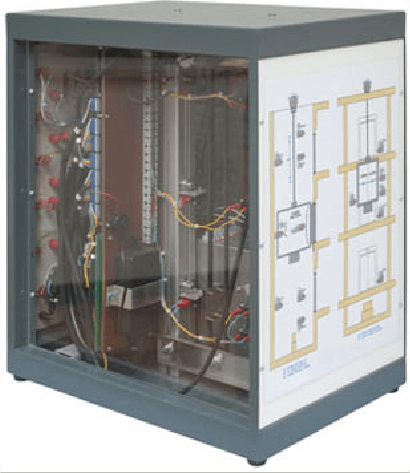


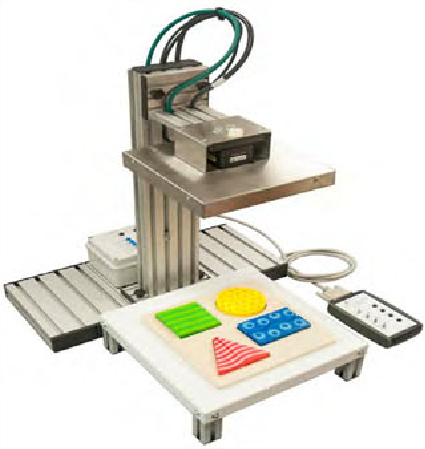

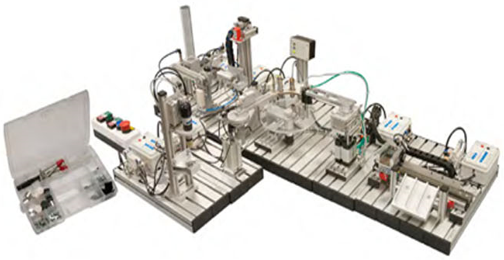
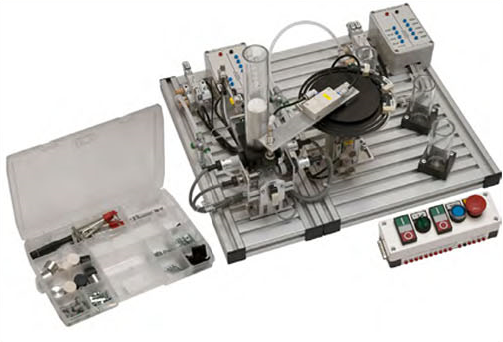
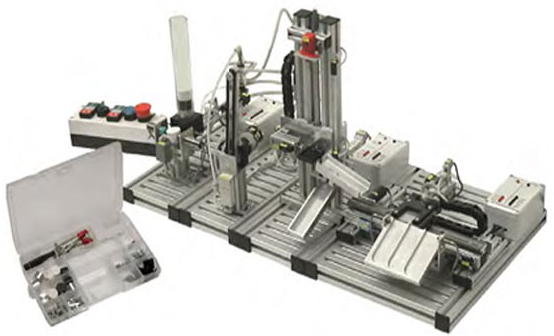
Product
Reviews
add Review
reviews
No Review Yet.